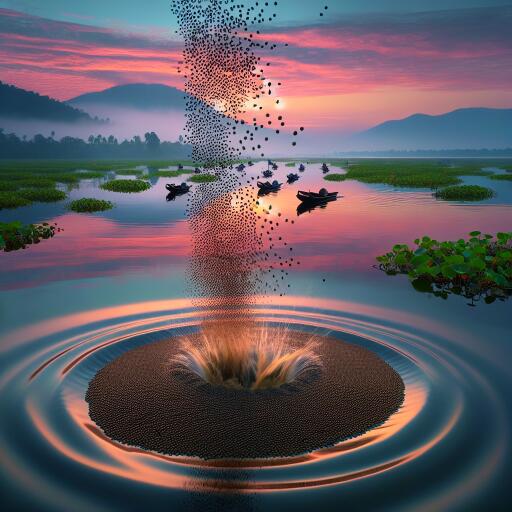
3 Million Short Neck Clam Seeds Released into Ashtamudi Lake
The decline in the short neck clam population in Ashtamudi Lake has raised considerable concern among ecologists and local communities. In an innovative stride towards reviving the clam populations, the ICAR-Central Marine Fisheries Research Institute (CMFRI) embarked on an ambitious stock enhancement initiative by releasing clam seeds back into the lake.
On a significant day, three million seeds of the short neck clam, scientifically known as Paphia malabarica, were introduced into Ashtamudi Lake. These seeds originated from the hatchery at the Vizhinjam regional centre of CMFRI, specifically developed to address the depletion challenges facing this species.
This endeavor is recognized as a sustainable measure to replenish clam stocks. The objectives are multi-faceted: restoring clam populations, promoting sustainable practices, supporting the livelihood of local fishermen, and enhancing the potential for increased export revenues. The stock enhancement programme aligns with the Pradhan Mantri Matsya Sampada Yojana (PMMSY) blue growth project, an initiative committed to bolstering aquatic resources.
The distribution of the clam seeds took place in two key areas within the lake—Bishop Thuruthu and Valam Ansil Thuruth, with Bishop Thuruthu being designated as a clam sanctuary. The success of the project stems from CMFRI’s dedicated yearlong research, culminating in the successful development of captive breeding technology for the species.
The ecological and economic significance of the short neck clam cannot be understated. In the past, clams from Ashtamudi Lake have offered substantial contribution to both local and international markets. However, in recent years, the clam fishery has plummeted drastically, endangering the economic practices of thousands of fishermen dependent on this indispensable biological resource.
Notably, recent annual catches have alarmingly dropped to less than 1,000 tonnes from the impressive 10,000 tonnes recorded in the early 1990s, according to estimates by CMFRI. The critical issues contributing to this decline are manifold, ranging from environmental pollution and the invasion of non-native species such as the Charru mussel to the extensive impacts of climate change. These factors collectively pose a serious threat to the once flourishing clam population in Ashtamudi Lake.
The ongoing effort by CMFRI holds promise in safeguarding the delicate balance of this aquatic ecosystem, ensuring the continuity and abundance of the short neck clams for future generations. Through concerted efforts in restoration and conservation, it is hoped that the ecosystem’s natural equilibrium can be restored alongside aiding the local economy.
In conclusion, the release of these clam seeds marks a pivotal step towards addressing ecological degradation while reinforcing sustainable fishing practices. As climatic and environmental challenges persist, the success of such initiatives could serve as a blueprint for similar conservation efforts across the globe.





Leave a Reply